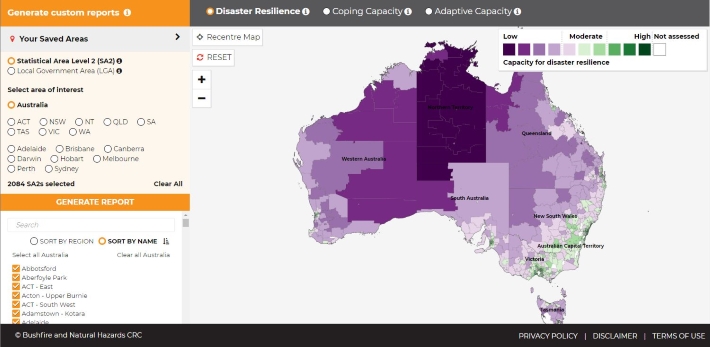The 2019/2020 was a bushfire season like no other in Australia’s history. It devastated communities and stretched fire-fighting resources across the east coast.
A new tool, developed by the Bushfire and Natural Hazards Cooperative Research Centre in partnership with the University of New England, will enable organisations to tailor programs and policies that strengthen disaster resilience, from national and state levels, right down to specific communities.
The Australian Disaster Resilience Index, launched in July 2020, is presented as an interactive website and provides a nationally standardised index of resilience in the form of navigable maps of regions across the country.
Lead researcher at the University of New England, Dr Melissa Parsons, explains that there are many social, economic and institutional factors that contribute to disaster resilience.
“When we formed those factors into the Australian Disaster Resilience Index, we showed that communities around Australia are not equal when it comes to their capacity for disaster resilience. There are several factors acting together to influence how well communities might fare in planning for, preparing for, responding to and recovering from natural hazards, and this capacity varies from place to place.
“Around the country, communities will have strengths that influence their resilience, such as community connectedness or provision of emergency services, but they will all have their challenges as well, for example a lack of access to telecommunications in more remote areas,” Dr Parsons said.
Given the wide variety of place‐based factors that contribute to disaster resilience, and the complex ways in which these factors interact, it can be incredibly hard to effectively improve disaster resilience. All communities are different. What works in one location won’t necessarily work somewhere else.
Dr John Bates, Research Director of the Bushfire and Natural Hazards Cooperative Research Centre, says that the Australian Disaster Resilience Index is a crucial new support tool for decision makers at the local, state and national levels, as it provides much‐needed knowledge to help prepare for, absorb and recover from natural hazards.
The challenge
Finding ways to embody sustainability.
How we help
As a university committing to environmental, social and financial resilience for not just UNE but also for our communities.
Impact on communities
Having a partner in achieving a sustainable future.




